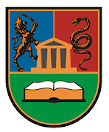Please use this identifier to cite or link to this item:
https://scidar.kg.ac.rs/handle/123456789/12310Full metadata record
| DC Field | Value | Language |
|---|---|---|
| dc.rights.license | restrictedAccess | - |
| dc.contributor.author | Gutman I. | - |
| dc.contributor.author | Furtula, Boris | - |
| dc.date.accessioned | 2021-04-20T20:31:43Z | - |
| dc.date.available | 2021-04-20T20:31:43Z | - |
| dc.date.issued | 2014 | - |
| dc.identifier.uri | https://scidar.kg.ac.rs/handle/123456789/12310 | - |
| dc.description.abstract | © 2015 by Taylor & Francis Group, LLC. A graph is a mathematical object defined as an ordered pair (V, E) of sets V and E, where V is a (finite or infinite) set of some unspecified elements, called vertices, and E is a set of some (ordered or unordered) pairs of elements of V, called edges. Thus, a graph is an abstract set-theoretical concept. As such, it cannot be viewed as something quantitative. Yet, for most applications of graphs, pertinent numerical indicators are needed, which requires that their structural aspects be quantified (see, for instance, [5,11,16,29,30,33,37,81,91,93,122]). This can be done in many different ways, depending on the nature of the intended application, or on the mathematical apparatus preferred. | - |
| dc.rights | info:eu-repo/semantics/restrictedAccess | - |
| dc.source | Quantitative Graph Theory: Mathematical Foundations and Applications | - |
| dc.title | Metric-extremal graphs | - |
| dc.type | bookPart | - |
| dc.identifier.doi | 10.1201/b17645 | - |
| dc.identifier.scopus | 2-s2.0-84960087106 | - |
| Appears in Collections: | Faculty of Science, Kragujevac | |
Files in This Item:
| File | Description | Size | Format | |
|---|---|---|---|---|
| PaperMissing.pdf Restricted Access | 29.86 kB | Adobe PDF |  View/Open |
Items in SCIDAR are protected by copyright, with all rights reserved, unless otherwise indicated.

